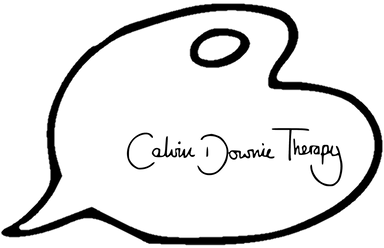
What is Art Therapy?
Art Therapy (or Art Psychotherapy) is a form of psychotherapy which uses art making as the main mode of communication to explore emotional difficulties through art making and verbal dialogue. In sessions, art is not used as diagnostic tool but rather as a medium to address emotional issues which may be complex or confusing. There is no need to be creatively skilled and previous art experience is not required. Sessions are not art lessons, instead they're based upon therapeutic boundaries and psychodynamic theory where your art therapist will work with conscious and unconscious thought processes in the art and in the therapeutic relationship. It's the role of an art therapist to be impartial, understanding and to help you to explore your emotions whilst baring no judgement. Although an art therapist may offer information, it's not their role to tell you what actions to take, or what you should think or do.
Why Do People Seek Art Therapy?
Each person is unique and so too are their reasons for seeking art therapy. Some examples of what some people tend to look for from art therapy include; to gain a sense of relief, identity or self esteem difficulties, a better understanding of uncomfortable feelings, thoughts or behaviours or working through a past or present traumatic event. It's important to note that people begin art therapy at different points on their journey. Some may be aware of the roots of their difficulties and for others this may be unknown. Some people also may find art therapy a less threatening way of communicating, rather than using verbal communication, whilst others may not physically have the ability to communicate through words due to health conditions.
What Does a Session Involve?
While establishing a therapeutic relationship together, the client may use materials such as; paint, pencils, pens, clay, sand, objects, toys or puppets. Art Therapy relies on a combination of elements including the process of art making, spoken words, and the safe and confidential environment. Sessions begin with an initial meeting to better understand your reasons for seeking therapy and to access whether art therapy is the best approach, rather than speaking therapy or a different alternative therapy. We will discuss art therapy options tailored to your individual needs and agree on how best to go forward. Some people only require support for a few weeks, whilst others may benefit from longer-term session plans. Sessions last 50 minutes and tend to be once a week at a regular time and day. Consistency in time and in therapy space is an important factor in therapy.
What Are The Benefits Of Attending Art Therapy?
Research shows that art therapy has been proven to; help reduce stress, manage behaviour, developing interpersonal relationships, increasing self-esteem and awareness and other factors relating to clients needs. Often, having art therapy as a space where you can gain a different perspective can allow people to feel calmer, more grounded, or work through difficulties, as well as improving their focus and thought clarity. For some people expressing raw and vulnerable feelings may feel intimidating or exposing. Engaging with art materials in art therapy can allow the client and therapist to "look at" the art making process and art made, rather than physically "looking at" the client; allowing unconscious thought processes to be observed in a less invasive way.

